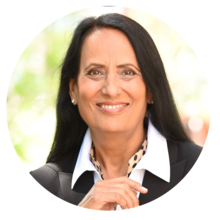About this Presentation
This presentation describes breaking a market constraint using the thinking processes (TP) and TRIZ. The customer doesn't want a product or service but a solution to their problem. The solution must provide a win-win for the customer and the supplier. Your company must construct an unrefusable offer (URO). Five steps in constructing a URO using the thinking process are: 1. Determine the core conflict responsible for some/many of the market’s significant problems. 2. Determine what changes your organization must make internally to solve the market’s core problem; 3. Construct a solution, an offer your organization can provide to resolve that core conflict; 4. Develop an implementation plan that addresses the obstacles blocking the implementation of the solution; 5. Learn how to sell the URO to the market, as well as to your own organization. TRIZ is described including Anticipatory Failure Determination, Directed Evolution, Inventive Problem Solving, and Control of Intellectual Property. The use of S-curve analysis and TRIZ is discussed with examples illustrating innovative solutions. The TP can then be used to understand the undesirable effects of the customer that your organization can impact to create a decisive competitive advantage.
What Will You Learn
To help you get the most value from this session, we’ve highlighted a few key points. These takeaways capture the main ideas and practical insights from the presentation, making it easier for you to review, reflect, and apply what you’ve learned.

The speaker discusses how organizations can overcome market constraints by using the TOC thinking processes to create unrefusable offers to the market. They emphasize the importance of understanding the customer's viewpoint and creating a win-win situation.
The speaker introduces TREES, a methodology for continuous innovation. They discuss how TREES can help organizations to invent on demand, and how it can be used to predict future trends and create a roadmap for innovation.
The speaker emphasizes the importance of protecting intellectual property and the potential risks of infringement. They also discuss how the TOC project management solution can help to quickly bring innovative ideas to market.
Instructor(s)
Suzan Bergland

Ms Alka Wadhwa
Alka Wadhwa is an experienced consultant and process improvement expert with over 24 years of expertise in the Theory of Constraints (TOC), Lean Six Sigma, and organizational performance optimization. She has successfully led projects in healthcare, financial services, and manufacturing, driving significant improvements such as a 67% boost in hospital operations and a 140% increase in outpatient visits.
Previously, Alka Wadhwa spent 17+ years at GE Global Research Center, where she led initiatives to enhance various GE businesses through advanced technologies, process redesign, and system optimization. Founder of Better Solutions Consulting, LLC, she specializes in using TOC, Six Sigma, and data analytics to streamline operations and build high-performance teams.
Her work has earned her multiple accolades, including the Empire State Award of Excellence in healthcare.

Dr Gary Wadhwa
Dr. Gary Wadhwa is a Board Certified Oral & Maxillofacial Surgeon with extensive experience in the field. He completed his Oral & Maxillofacial Surgery training at Montefiore Hospital, Albert Einstein College of Medicine in Bronx, NY, and has served as an Attending at prestigious institutions like St. Peters Hospitals, Ellis Hospital, and Beth Israel Hospital in NY. With a career spanning over two decades, he was the former CEO and President of a group specialty practice in NY from 1994 to 2015. Dr. Wadhwa holds an MBA from UT at Knoxville, TN, and has undergone additional training in System Dynamics at MIT, Health System Management at Harvard Business School, and Entrepreneurship and healthcare innovations at Columbia Business School. Committed to expanding access to Oral & Maxillofacial Surgery care, he is currently engaged in a meaningful project to provide healthcare services to underserved populations in inner city and rural areas through non-profit Community Health Centers.
